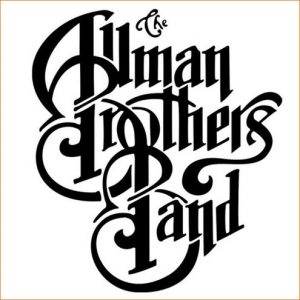by Pat MacEnulty
Special to the Observer
27 August 2004 – The Charlotte Observer (NC)
DIXIE LULLABY: A Story of Music, Race, and New Beginnings in a New South
By Mark Kemp. Free Press. 296 pages. $26.
Former Rolling Stone writer and editor Mark Kemp, who grew up in Asheboro, has written a ramblin’ man’s history of Southern rock. A hybrid of memoir, journalism and scholarship, “Dixie Lullaby” is a compelling account of Kemp’s search for the deeper meaning of Southern rock ‘n’ roll.
The story chronicles a fascinating era beginning with the interracial musical collaborations at Muscle Shoals studios in the 1960s that resulted in memorable hits by Wilson Pickett, Etta James and Aretha Franklin. However, this relatively comfortable relationship between black and white musicians soured after the assassination of Martin Luther King Jr. According to Kemp, the schism made room for a uniquely Southern brand of rock ‘n’ roll in the persons of Duane Allman and Ronnie Van Zant.
Both musicians expressed the pain and insecurity of the New South as young whites tested and rejected the prejudices of their parents and grandparents. Young white Southerners did not have the role models of leaders such as King, so, as Kemp points out, they turned to music for answers. The Allman Brothers and Van Zant’s band Lynyrd Skynyrd gave voice to a generation and helped it find a new identity that kept its Southern character intact.
While these bands with their enormous talents and destructive impulses figure prominently in the book, Kemp details the contributions of other Southern artists, including Janis Joplin, Charlie Daniels, Michael Stipe of R.E.M., Widespread Panic and Kentucky Headhunters.
Kemp deftly interweaves his personal story of discovery with an examination of rock music’s political and social implications. He describes what it was like growing up white in the South during the civil rights era, and he investigates the neglected subject of how music affected race relations in the region during the 1970s.
Through interviews with players in the recording business as well as hardcore fans, Kemp’s writing conveys an intimate atmosphere. His descriptions of his coming of age evocatively render the times: “Freaks were everywhere: guys with long hair, beards and bellbottoms; girls in halter-tops and skintight Landlubber jeans; leftover hippies in face paint and Indian prints, granny dresses, beads, leather vests, top hats, boots, sandals, bare feet. … These were my people.”
Kemp’s astute observations will provide insight to those who knew something wasn’t right at certain points in rock’s history. Regarding Gregg Allman’s marriage to Cher and other unfortunate events, such as the emergence of talented but bombastic musical groups, Kemp writes: “By the mid-70s, most rock bands were either making total idiots of themselves or taking themselves entirely too seriously. … This wasn’t the rock ‘n’ roll of Jerry Lee Lewis and Little Richard. It was J.R.R. Tolkien meets Andrew Lloyd Webber with loud guitars.”
“Dixie Lullaby” doesn’t skirt drug and alcohol abuse. Kemp admits that while drugs and alcohol may have fueled some of the musical outpouring of the times, the endless party also derailed many a talent and almost destroyed him, as well.
Kemp’s book is a masterful and honest tribute to Southern music makers, from rhythm and blues and rock ‘n’ roll to punk and country. Those of us who grew up on Southern rock will be steeped in the nostalgia of remembered songs and the feelings that accompany them.
And yet, because Kemp’s musical knowledge is so wide-ranging, this book should appeal to multiple generations and listeners of varied tastes. We can all remember songs that somehow defined our lives at a particular moment in time. Whether you listen to Little Feat or Lil’ Kim, you won’t have trouble relating to Kemp’s passionate narrative.
And after reading this book, some people will probably begin searching the bins of used CD stores to fill in the gaps of their collections.
Kemp is currently the entertainment editor at The Charlotte Observer, and his feelings about his new home as expressed at the end of the book are somewhat ambivalent. But of course ambivalence is what being a Southerner is all about.
Meet the Author Mark Kemp will be at Park Road Books, 4139 Park Road, on Saturday, Sept. 18, beginning at 1 p.m.
Kemp’s Southern Rock List In “Dixie Lullaby,” Mark Kemp focuses on white Southern rockers of the late’60s to now. He lists the following albums as milestones in Southern rock’s musical, social and political evolution:
1. Dr. John: “Gris-Gris” (1968).
2. The Allman Brothers Band: “Idlewild South” (1970).
3. Janis Joplin: “Pearl” (1971).
4. Lynyrd Skynyrd: “[Pronounced Leh-Nerd Skin-Nerd]” (1973).
5. Jason & the Scorchers: “Fervor” (1983).
6. R.E.M.: “Fables of the Reconstruction” (1985).
7. Steve Earle: “Guitar Town” (1986).
8. Black Crowes: “The Southern Harmony and Musical Companion ” (1992).
9. Drive-By Truckers: “Southern Rock Opera” (2001).
10. Bubba Sparxxx: “Deliverance” (2003).
Charlotte writer Pat MacEnulty grew up in Jacksonville, Fla., home of Lynyrd Skynyrd.
Copyright 2004 The Charlotte Observer. All rights reserved.



